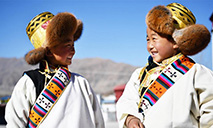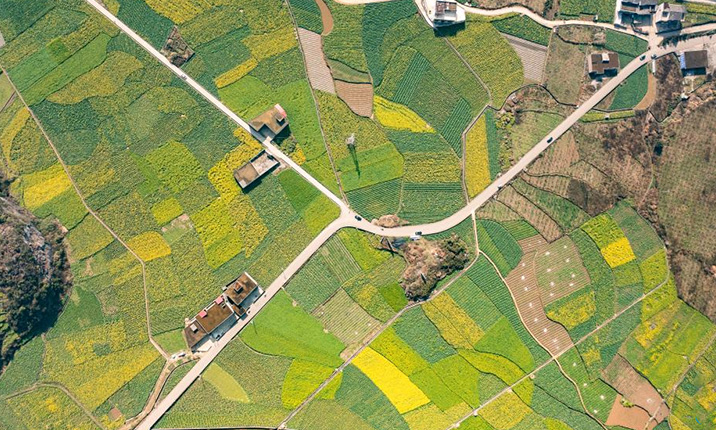Wildlife protection in Tibet continues to thrive

A Tibetan antelope is pictured at the Qiangtang National Nature Reserve in southwest China's Tibet Autonomous Region, Sept. 25, 2021. (Xinhua/Jigme Dorje)
LHASA, March 3 (Xinhua) -- Tibet Autonomous Region in southwest China has become an ideal habitat for wild animals over the years amid the region's thriving biodiversity protection endeavors.
With people giving more living space to wildlife, the relationship between human and nature is getting increasingly harmonious in Tibet, said Norgyel, head of the region's ecology and environment department, on the eve of this year's World Wildlife Day.
Since 2013, World Wildlife Day has been observed every year on March 3, aiming to raise public awareness of protecting wild animals and plants globally. This year's theme is "Recovering key species for ecosystem restoration."
Tibet has seen a steady increase in endangered wildlife population, thanks to its continuous efforts over the past decades.
Compared to statistics released by the regional wildlife conservation society in the 1990s, the population of Tibetan wild ass has risen to around 90,000 from 50,000 previously.
The population of black-necked cranes has exceeded 10,000 from 1,000 to 3,000 previously, while the number of wild yaks rose to about 10,000.
Meanwhile, the population of Tibetan antelopes has surged from 50,000 to more than 300,000 over the past decades.
Last year, China downgraded the status of Tibetan antelopes from "endangered" to "near threatened," owing to proactive anti-poaching and biodiversity protection efforts.
Besides, more than 9,600 varieties of wild plants have been spotted in Tibet, among which 214 are endangered plants listed on the Convention on International Trade in Endangered species of Wild Fauna and Flora (CITES), according to official statistics released in 2020.
Tibet forms the main body of the Qinghai-Tibet Plateau, which is dubbed the "source of river and ecology" in Asia. To secure the local ecosystems, the region has spent over 20 billion yuan (about 3 billion U.S. dollars) in ecological protection from 2016 to 2020, more than double the spending in the previous five years.
The funds were mainly used in conservation projects aimed at afforestation, wetland protection and restoration, nature reserve construction, natural forest protection, sand control measures and wildlife protection, among others.
So far, Tibet has built 47 nature reserves covering a total area of about 412,200 square km, which accounts for more than one-third of the region's total area, Norgyel noted.
Photos
Related Stories
Copyright © 2022 People's Daily Online. All Rights Reserved.










